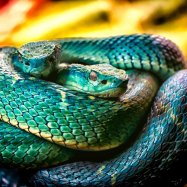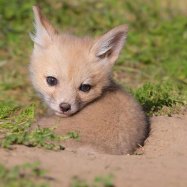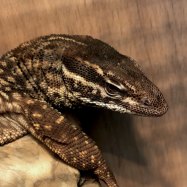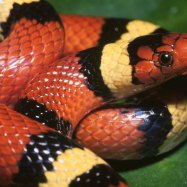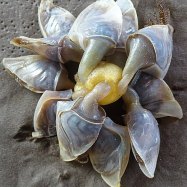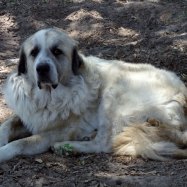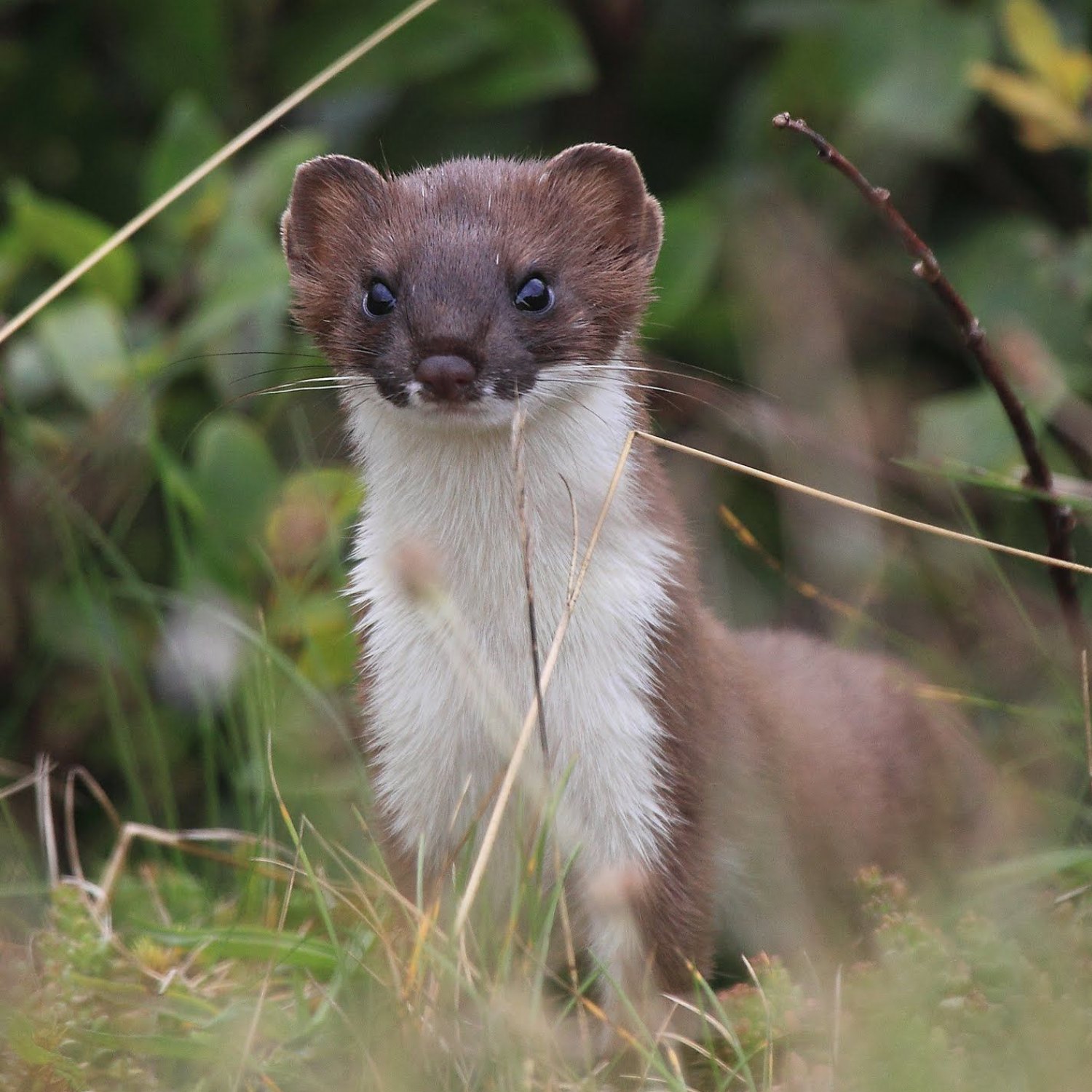
Stoat
15 to 30 centimeters (5.9 to 11.8 inches)
The stoat, a member of the Mustelidae family, is a small but fierce predator found in Eurasia and North America. With its slender body and short legs, it is perfectly adapted to hunting in a variety of habitats. Ranging in length from 15 to 30 centimeters, the stoat may be small in size but it is a formidable predator. #Stoat #Mustelidae #Eurasia #NorthAmerica #Predator #Wildlife
Animal Details Summary:
Common Name: Stoat
Kingdom: Animalia
Habitat: Forests, grasslands, wetlands, tundra
Meet the Stealthy Stoat: Masters of Adaptation in Eurasia and North America
In the vast landscapes of Eurasia and North America, there exists a small and cunning predator known as the stoat. Scientifically known as Mustela erminea and commonly referred to as the stoat, this creature belongs to the animal kingdom, phylum Chordata, and class Mammalia. As part of the Carnivora order and Mustelidae family, the stoat is a highly adaptable and skilled hunter that can be found in various habitats across multiple countries.The Wandering Predator
The stoat's geographical distribution covers a large expanse of the northern hemisphere, including parts of Eurasia and North America Stoat. With a wide range of habitats to choose from, these creatures are often found in forests, grasslands, wetlands, and even tundra regions. This versatility in habitat selection has allowed the stoat to thrive in different environments and has contributed to its growing population.One of the reasons for the stoat's vast range is its ability to wander and adapt. These animals are not restricted to a specific territory and are known to travel long distances in search of food and suitable habitats. In fact, some stoats have been observed migrating up to 300 kilometers (186 miles) in search of new territories and prey. This constant movement also helps prevent inbreeding and ensures genetic diversity within the species.
The Carnivorous Hunter
As a member of the Carnivora order, it's no surprise that the stoat has a strictly carnivorous diet. These creatures are skilled hunters and have adapted to a wide variety of prey, making them a crucial part of the food chain in their respective habitats.The primary source of food for stoats includes small mammals such as rabbits, rodents, and birds Seagull. However, they are known to hunt larger prey, including hares, squirrels, and sometimes even bigger animals like snowshoe hares. Their sharp teeth, strong jaws, and agile bodies make them efficient hunters, and their ability to adapt to different environments allows them to hunt a vast range of prey.
The Chameleons of the Fauna World
One of the most fascinating qualities of the stoat is its ability to change its fur color according to the season. In the summer, these creatures don a chestnut-brown coat with a white belly, while in the winter, their fur turns completely white, except for the black-tipped tail. This remarkable adaptation allows them to blend in with their surroundings and remain camouflaged from predators and prey.The transformation of the stoat's fur color is known as molting and is triggered by changes in light exposure and temperature. The process takes about six to eight weeks, and during this time, their fur becomes thicker and denser, providing essential insulation and warmth during the long, harsh winters.
The Elusive Sleuth
The stoat is also known for its slender and elongated body shape, with short legs and a long tail. This physical adaptation allows them to be incredibly agile and flexible, making it easier for them to navigate through dense vegetation and quickly catch elusive prey. These creatures have been observed climbing trees, swimming across water bodies, and even leaping several feet in the air to catch their prey.Furthermore, the stoat also has excellent hearing and sense of smell, allowing them to detect prey from a considerable distance. Once they have located their target, they dash towards it with precision and speed, making them one of the most skilled hunters in their ecosystem.
The Mustela Family Tree
As a member of the Mustelidae family, the stoat is closely related to other mustelids such as weasels, ferrets, and otters. This diverse family of carnivorous mammals shares similar physical traits, including elongated bodies, short legs, and sharp teeth. The stoat, however, stands out due to its unique adaptation and remarkable behavior.The mustelids' diet and behavior have played a crucial role in shaping the ecosystems in which they live. As predators, they help control the populations of their prey, balancing the delicate ecosystem and maintaining a healthy balance between different species.
A Bright Future Ahead
Despite facing certain threats such as habitat loss and predation by larger animals, the stoat's population remains stable in most areas. Because of their wide distribution and adaptable nature, they have been able to survive and thrive in different environments. In some areas, they are even considered a pest, particularly for their impact on small game animal populations.In terms of conservation efforts, stoats are classified as least concern on the IUCN Red List, which is a testament to their resilience and adaptability. However, like many other species, they face the constant threat of habitat destruction, climate change, and human interference. It is essential to have sustainable conservation practices in place to ensure their survival and maintain a healthy balance in their ecosystems.
The Ultimate Masters of Adaptation
In conclusion, the stoat is a magnificent creature that has mastered the art of adaptation, making it a highly successful predator. Its ability to thrive in different habitats, wander vast distances, and change its fur color for camouflage makes it a stealthy and elusive hunter. As part of the Mustelidae family, the stoat plays a crucial role in maintaining the balance of its ecosystem and is a fundamental part of the natural world.Whether you encounter a stoat in a bustling forest, a serene grassland, or a frozen tundra, remember to appreciate its remarkable resilience and the vital role it plays in its environment. And next time you see a small and slender creature with a white coat and black-tipped tail, you'll know it's not just any ordinary animal – it's the cunning and adaptable stoat.

Stoat
Animal Details Stoat - Scientific Name: Mustela erminea
- Category: Animals S
- Scientific Name: Mustela erminea
- Common Name: Stoat
- Kingdom: Animalia
- Phylum: Chordata
- Class: Mammalia
- Order: Carnivora
- Family: Mustelidae
- Habitat: Forests, grasslands, wetlands, tundra
- Feeding Method: Carnivorous
- Geographical Distribution: Eurasia, North America
- Country of Origin: Multiple countries
- Location: Various habitats in Eurasia and North America
- Animal Coloration: Chestnut-brown fur in summer, white fur with black-tipped tail in winter
- Body Shape: Slender and elongated body with short legs
- Length: 15 to 30 centimeters (5.9 to 11.8 inches)
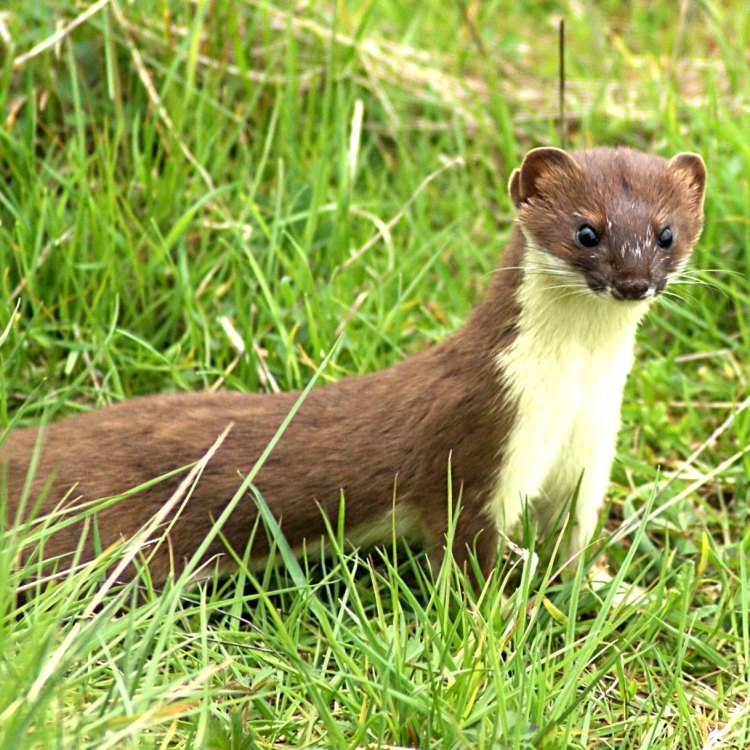
Stoat
- Adult Size: Approximately 25 to 40 centimeters (9.8 to 15.7 inches)
- Average Lifespan: 2 to 5 years in the wild, up to 10 years in captivity
- Reproduction: Sexual
- Reproductive Behavior: Polygamous
- Sound or Call: High-pitched scream or trilling sound
- Migration Pattern: Non-migratory, but may disperse in search of new territories
- Social Groups: Solitary
- Behavior: Excellent climbers and swimmers, agile hunters
- Threats: Habitat loss, predation by larger carnivores
- Conservation Status: Least Concern
- Impact on Ecosystem: Helps control rodent populations
- Human Use: Fur trade, pest control
- Distinctive Features: Black-tipped tail, seasonal color change
- Interesting Facts: White winter coat is known as ermine
- Predator: Owls, eagles, larger carnivores
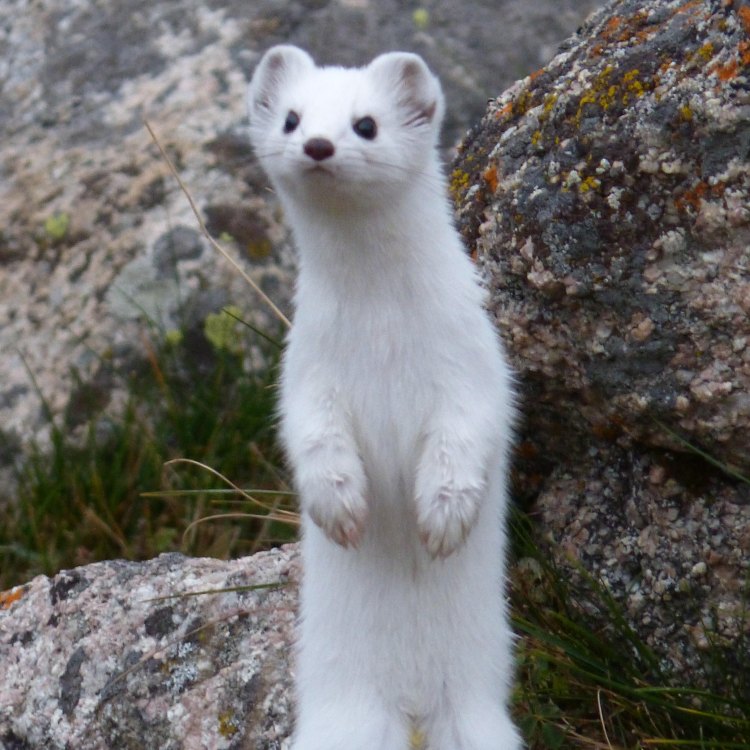
Mustela erminea
The Stoat: A Fascinating and Misunderstood Carnivore
From its unique fur color changing abilities to its notoriously high-pitched scream, the stoat (Mustela erminea) is a fascinating and often misunderstood creature. This small carnivorous mammal may not be as well-known as other animals, such as bears or wolves, but it plays an important role in maintaining the balance of ecosystems and has a long history of human interaction.In this article, we will explore the distinctive features and behaviors of the stoat, its impact on the environment, and its interaction with humans.
The Size and Lifespan of the Stoat
The stoat is a relatively small animal, measuring approximately 25 to 40 centimeters (9 PeaceOfAnimals.Com.8 to 15.7 inches) in length. It has a long, slender body with short legs and a short, pointy face. Its fur is a combination of brown, black, and white, with a distinctive black tip on its tail.In the wild, the stoat has an average lifespan of 2 to 5 years, but in captivity, it can live up to 10 years. This difference in lifespan is due to the harsh living conditions in the wild, where the stoat faces various threats and challenges.
Reproductive Behavior and Social Groups
The stoat is a sexual creature and has a polygamous mating system. This means that one male mates with multiple females during the breeding season, which typically occurs in the spring or early summer.After a gestation period of approximately 280-340 days, the female stoat gives birth to a litter of up to 13 kits Skua. The kits are born blind and helpless, and the mother will care for them until they are weaned at around 6 weeks old.
Unlike other social animals, the stoat is a solitary creature and does not form social groups. This behavior is thought to be due to their territorial nature and their need for a large hunting range.
Behaviors and Adaptations
The stoat is a highly adaptable animal with excellent climbing and swimming abilities. It is known for its agile and acrobatic hunting techniques, which make it a formidable predator. Its slender body and small size allow it to easily maneuver through cracks and crevices to catch prey, which includes small mammals, birds, and insects.Another notable adaptation of the stoat is its seasonal color change. In the winter, its fur turns completely white, except for the black tip of its tail. This adaptation allows the stoat to blend in with its surroundings and helps it avoid detection by predators.
Threats and Conservation Status
Habitat loss is a significant threat to the stoat, as it requires a diverse range of habitats, including grasslands, forests, and wetlands. Human development, such as urbanization and agriculture, has led to the destruction and fragmentation of these habitats, making it difficult for stoats to find suitable living and hunting areas.Predation by larger carnivores is also a threat to the stoat, as it is a small and vulnerable animal. Animals such as owls, eagles, and larger predators like foxes and weasels, often prey on stoats.
Despite these threats, the stoat is listed as "Least Concern" on the IUCN Red List of Threatened Species. This means that it is not currently facing any significant risk of extinction. However, ongoing conservation efforts are essential to monitor and protect their populations.
The Stoat's Impact on the Ecosystem
The stoat's role in the ecosystem may be small, but it is crucial. As a predator, it helps keep rodent populations in check, preventing them from overpopulating and causing damage to crops and other plant life. This control of rodent populations also indirectly benefits other animals that rely on these plants for food and shelter.Without the stoat's presence, there could be a ripple effect on the ecosystem, potentially leading to imbalances and disruptions in the food chain.
Human Interaction with Stoats
The stoat's relation with humans has a long history, and it is a complicated one. In some cultures, the stoat is revered for its fur, which is used to make luxurious and highly sought-after garments. The white winter coat of the stoat, known as ermine, was often reserved for royalty and nobility in European history.However, the demand for their fur has led to over-harvesting and a decline in stoat populations. Today, hunting and trading of stoat fur are regulated to protect their numbers. The fur trade, although controversial, is still a significant human use of stoats.
On the other hand, stoats are also used for pest control purposes. Due to their natural hunting abilities, they are sometimes introduced to control rodent populations in areas where they have become problematic, such as on farms or in gardens.
Interesting Facts about Stoats
Aside from their distinctive black-tipped tail and seasonal color change, there are many other interesting facts about stoats that make them stand out. For example, their noticeable trilling call or their high-pitched scream when they feel threatened.Also, contrary to popular belief, stoats do not hibernate during the winter. Instead, they remain active and change their behavior by hunting during the day rather than at night.
In Conclusion
In conclusion, the stoat may be a small and often overlooked predator, but it plays a significant role in maintaining the balance of ecosystems. Its unique adaptations and behaviors make it a fascinating creature to study and observe.While the stoat may face threats in the form of habitat loss and predation, efforts are being made to protect and conserve their populations. As humans continue to study and learn more about these creatures, we can work towards a better understanding of their role in our environment and how we can ensure their survival for future generations.
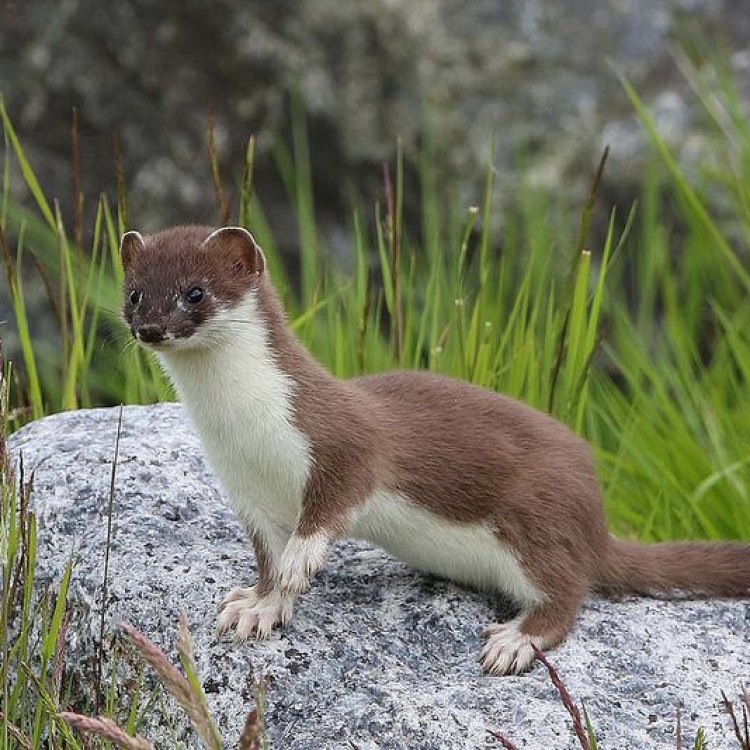
Meet the Stealthy Stoat: Masters of Adaptation in Eurasia and North America
Disclaimer: The content provided is for informational purposes only. We cannot guarantee the accuracy of the information on this page 100%. All information provided here may change without prior notice.

